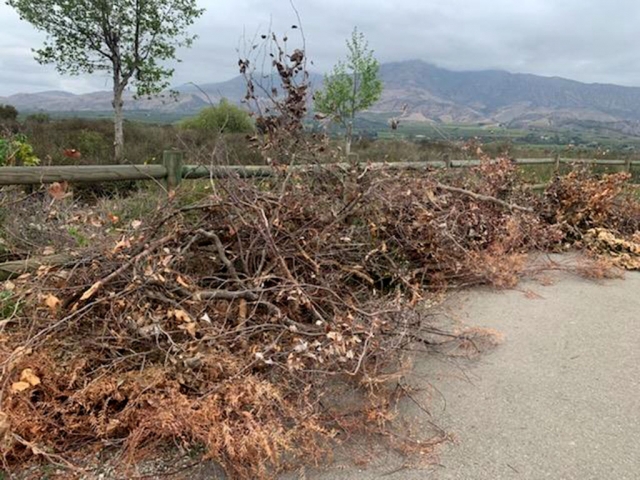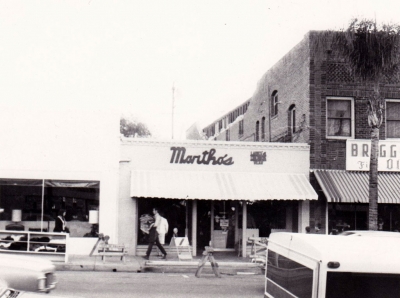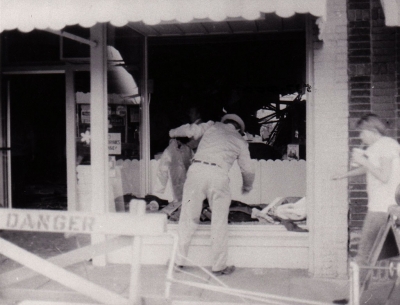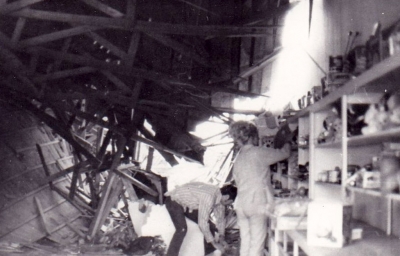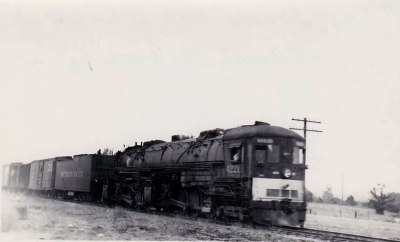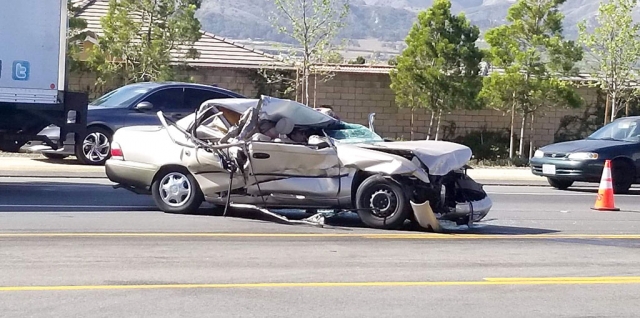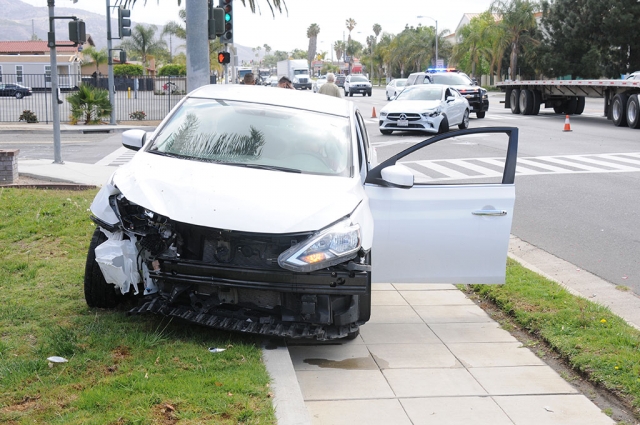|
By Anonymous — Wednesday, April 28th, 2021
Live in the Heritage Valley (Santa Paula, Fillmore, Piru) and need a ride to get your COVID vaccine? For a limited time, Valley Express is offering FREE rides on their Dial-A-Ride service to your vaccination appointment. Simply call 805-933-2267 to schedule your DAR trip after you secure your appointment. This service is not available for drive through vaccine appointments. Courtesy County of Ventura Facebook Page. |
|
By Anonymous — Wednesday, April 28th, 2021
 On Thursday, April 21, 2021 at 5:31pm, Fillmore Police Department, Fillmore Fire and AMR paramedics were dispatched to a vehicle versus pedestrian located in the alley east of Fillmore PD station. Arriving crews found a young patient on the ground with a bike down. Patient was treated by AMR and transported to a local hospital. Condition of the patient unknown. Fillmore Police Department units remained on scene to investigate the incident. Cause of the collision is under investigation. Photos courtesy Angel Esquivel-AE News. Enlarge Photo |
|
By Ventura County Sheriff Department — Wednesday, April 28th, 2021
The Fillmore Police Department will be hosting a program to educate newly licensed and future licensed drivers. Start Smart is a cooperative effort between the California Highway Patrol, Fillmore Police Department, teenage drivers, and their parents. In an attempt to remain proactive and not reactive, the Start Smart Program is designed to help young drivers and their parents/guardians understand the responsibilities associated with driving a motor vehicle. Start Smart will show how a poor choice behind the wheel can change the lives of everyone involved. Our goal is to raise awareness and reduce the number of teen-related injuries and deaths due to collisions. Interested parents are asked to call the Fillmore Police Department at 805-524-2233 or email RobertG.Thomas@Ventura.org for more information and to make a reservation; space is limited. There is no charge to attend the program. Due to Covid-19 health and safety guideline, this course will be offered online, via Microsoft Teams. Parents/child will have the ability to participate in the class from the safety of their homes and still be able to interact with the deputies presenting the course. This course will also be available in Spanish during the same allotted date/time as mentioned above. The Fillmore Police Department would like to thank the Fillmore Unified School District and Fillmore High School administration for their assistance so that students may use school-issued laptops to attend the class. The funding for this program is being provided by a grant issued from the California’s Office of Traffic Safety (OTS). Nature of Incident: Start Smart Driving Education Class |
Now Hiring: Deputy City Clerk
The City of Fillmore is seeking a detail-oriented and highly organized professional to join our City Clerk’s Office as Deputy City Clerk. This key role supports City Council operations, maintains official records, ensures legal compliance, and helps uphold transparency in local government. If you’re passionate about public service, governance, and supporting elected officials, we encourage you to apply. Learn more and apply at www.fillmoreca.gov.
|
By Anonymous — Wednesday, April 28th, 2021
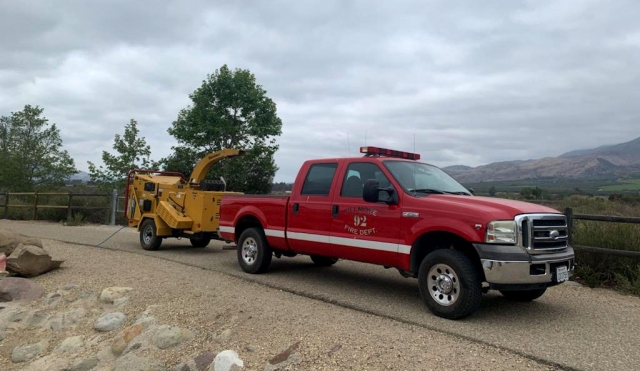 Fillmore City Fire crews were out working on local bike paths, clearing away overgrown brush last weekend. Pictured is one of the vehicles pulling a woodchipper. Enlarge Photo |
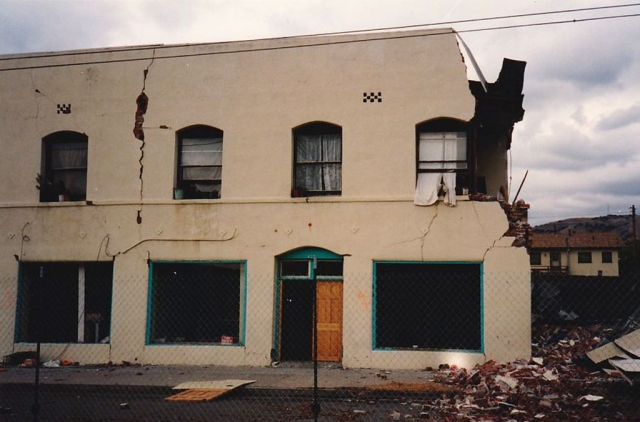 The Fillmore Hotel, which was one of many building that was damaged in the 1994 Northridge earthquake. Photos courtesy Fillmore Historical Museum. Enlarge Photo By Anonymous — Wednesday, April 28th, 2021
Courtesy Fillmore Historical Museum Do you remember the earthquake? For most in Fillmore that question would seem to refer to the 1994 Northridge Earthquake which devasted our downtown area, leaving vacant lots seen even today. But that was by no means the only quake to cause damage to our town. July 12, 1952, at 4:52 am, the Tehachapi Quake hit in a series of waves which lasted in diminishing strength for nearly 45 minutes. The damage here in Fillmore was noticeable but relatively light. There was firewall damage on roof at 340-340 1/2 Central Avenue (formerly Ragtyme Station). Ballard Furniture at 348 Central Ave. was also damaged. The train line through Fillmore suddenly became important once more after the Tehachapi quake. Train tunnels were caved in, the Ridge Route was blocked by a king-sized landslide. Trains were diverted through Fillmore for a time while the tracks were repaired. Fifty years ago, on February 9, 1971, a strong earthquake measuring 6.5 on the Richter Scale occurred in the Sylmar area of the San Fernando Valley. The shocks caused the upstairs wall of the Briggs Hardware Building (first known as Chili Franklin’s Pool Hall and Dance Hall when it was built in 1910) at 340 Central, to ripple and a large 70-foot chunk of bricks fell onto the roof of Martha’s, a dress shop just north at 344 Central (now Genesis Hair). An eye-witness later said when the brick mass hit Martha’s, the impact collapsed the roof and blew out the front windows. The store at 344 Central had to be rebuilt. The second story of 340 Central was so badly damaged it was removed. The second story had been a dance hall. The floor was left intact and is believed to still be there to this very day as part of a double ceiling. The Fillmore Hotel and the Filmore Citrus Association Packing House at A and Sespe had cracks in walls, but nothing major. Although the Fillmore Hotel survived the 1971 quake, In the 1994 quake it was destroyed. Luckily, and perhaps surprisingly, none of the school buildings suffered and damage from the 1971 quake. Several had already been taken out of service as class rooms under the Field Act which had been passed in 1933 after the Long Beach Earthquake, mandating that school buildings must be earthquake-resistant. Even these were not significantly damaged. As expected all the grocery stores in town had major clean up to do after the1971 quake. Aisles had to be cleaned as jars were thrown from shelves and damaged canned and boxed goods had to be disposed of. Enterprising high school students picked up some spare pocket money helping the store owners. Neither of these earthquakes were as devastating to our community and the 1994 Northridge Quake, but it’s good to remember that the 1994 quake was not an anomaly. We live in earthquake country and we are sure to have another one. The question is just when. |
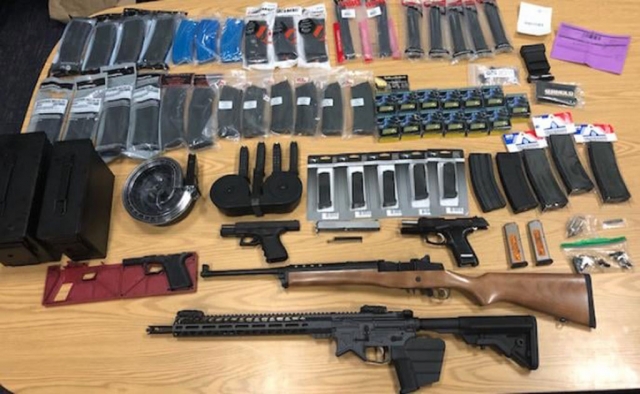 Deputies arrested Vargen for PC 32310 Possession of High Capacity Magazines and PC 30605(a) Possession of an Assault Rifle. Enlarge Photo By Ventura County Sheriff Department — Wednesday, April 21st, 2021
A check the wellbeing call results in the arrest of a 42-year-old Fillmore man for various weapons violations. On April 16, 2021, deputies received a call that Scott Vargen had been acting and talking in a bizarre manner. Deputies were told that Vargen had made statements about visualizing things and having messages sent to him. The reporting party was concerned about Vargen’s mental health wellbeing and notified law enforcement. Although the reporting party’s concern for Vargen’s wellbeing needed to be investigated, there was no immediate or imminent threat to the public. Deputies had the time to develop a plan, which included contacting the Ventura County Mental Health Crisis Intervention Team and requested their assistance. The Crisis Intervention Team (CIT) and deputies collaborated and conducted an investigation regarding these statements and behavior exhibited by Vargen. Deputies and CIT went to Vargen’s residence and spoke with him about his bizarre statements and behavior. During the interview, deputies learned that Vargen recently purchased several firearms. The deputies were able to inspect these firearms and determined one of the firearms was an illegal assault rifle. Vargen was in possession of several high capacity pistol and rifle magazines, in violation of California weapons regulations. Deputies arrested Vargen for PC 32310 Possession of High Capacity Magazines and PC 30605(a) Possession of an Assault Rifle. Vargen was booked at the Ventura County Main in lieu of $30,000.00 bail. The Fillmore Police Department would like to take this opportunity to express to the public if you see or hear something that is out of place or just not right, please say something. The adage of “See Something. Say Something.” relates to many different facets of our life. The Fillmore Police Department has access to many different resources and we can provide people with contacts to access those resources. Report Number: 21-50260 |
|
By Anonymous — Wednesday, April 21st, 2021
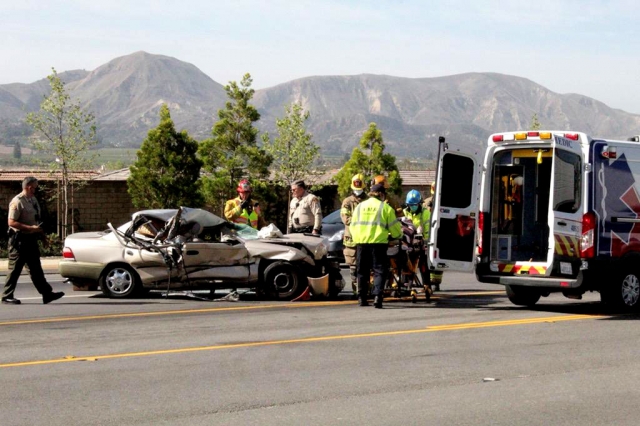 On Thursday, April 15, 2021 at 9:30am, the Ventura County Sheriff ’s Department, Fillmore Fire Department and AMR Paramedics were dispatched to a traffic collision located at Ventura Street (126 Highway) / Santa Clara Street, Fillmore. Arriving fire crews reported a semi truck and Toyota Corolla involved, with one person needing extrication and transported to VCMC, condition unknown. Toyota was reported in the center divider, with the semi on side lane, condition unknown. Police units shut down westbound traffic lanes until roadway was cleared. Cause of the crash is under investigation. Photo courtesy Angel Esquivel-AE News. Enlarge Photo |
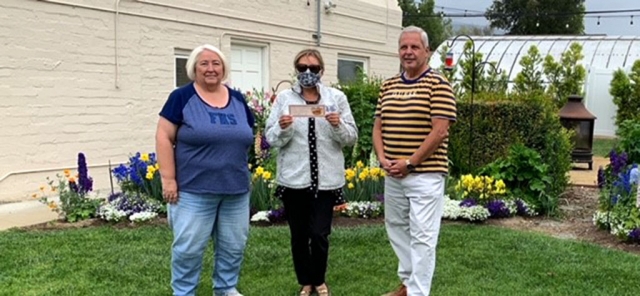 (l-r) Corinna Mozley, Fillmore High School Alumni Vice President and Ari Larson, Fillmore City Council Member, presenting FHS Alumni President Mark Ortega with a certificate from Otto & Sons Nursery for being selected March 2021 Yard of the Month. Photos Courtesy Matt Mozley. Enlarge Photo By Anonymous — Wednesday, April 21st, 2021
Fillmore Civic Pride presented FHS Alumni Park the March 2021 "Yard of the Month." They received a $40 gift certificate from sponsors Otto & Sons Nursery located at 1835 Guiberson Rd. in Fillmore. “Alumni Park is a gathering place for Fillmore High School Alumni," Mark Ortega, the president of the FHS Alumni, said. It is located at 559 Sespe Ave. right next door to the FHS Alumni office. According to Mark, currently featured in the garden are tall flowering stocks of delphiniums, fox gloves, Hollyhocks, and others. "All the daffodils were planted between Thanksgiving and Christmas of last year. They are all blooming at this time along with the other plants and flowers," he said. The entrance to the garden features a cute, white picket door. "We encourage the communities of Fillmore, Piru, Rancho Sespe, Bardsdale and especially our alumni to open our gates and come in and take photos. Alumni Park was created by our Fillmore High Alumni, for our Fillmore High Alumni. However, we hope all those who live in our beautiful surroundings can stop by enjoy the beautiful flowers and plants. Thank you again for awarding us Yard of the Month! We are honored," Mark said. For more information on Fillmore Civic Pride please call 805.794.7590 or email: petenari55@hotmail.com. |
|
By Anonymous — Wednesday, April 21st, 2021
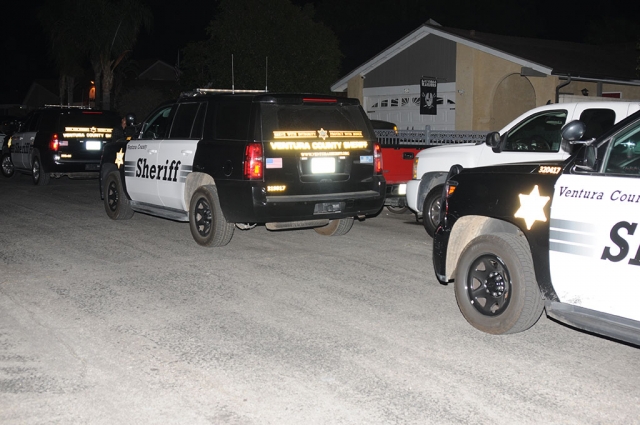 A strong police presence was in force Monday, April 19 at 9pm, in the 700 block of Del Valle in Fillmore. Reports were of a female being non-compliant with the officers, refusing to leave the residence. The police report classified it as a “Disturbance Subject”. The standoff ended at 12:11am, April 20th. No further information was made available. Enlarge Photo |
|
By Anonymous — Wednesday, April 21st, 2021
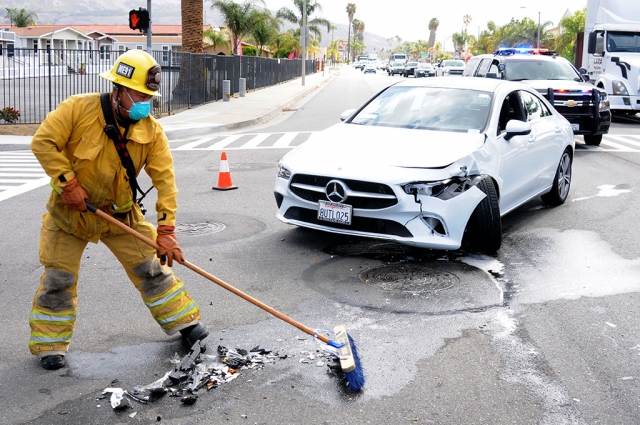 On Wednesday, April 14th at 8:50am, at the intersection of B & Ventura Street, a two-car collision occurred between a white Mercedes Benz and a white sedan. The sedan jumped the curb, causing major damage to the front end. The Mercedes sustained damages to the front driver’s side bumper and tire. Police directed traffic around the incident as they conducted their investigation and cleared the area. Cause of the crash is under investigation. Enlarge Photo |





